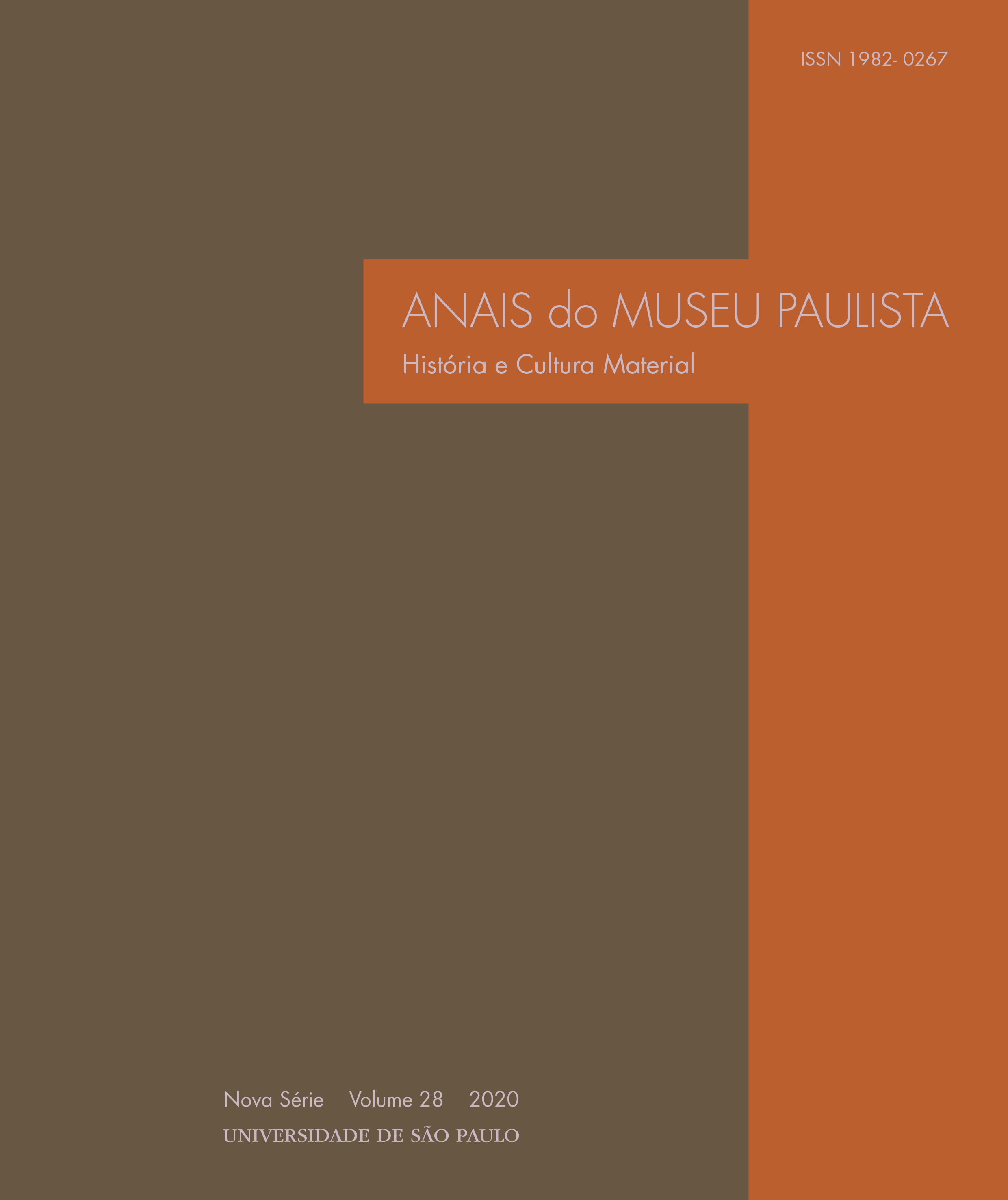MAMNBA Project: political and institutional context, conceptual and technical developments
DOI:
https://doi.org/10.1590/1982-02672020v28d2e29Keywords:
MAMNBA Project, Afro-Brazilian Heritage, Preservation PolicyAbstract
The article approaches the Black Religious Monuments and Sites Mapping Project (MAMNBA) as an important indicator of two converging movements that take shape in the 1980s in Brazil. The first one is the emergence of the "national heritage" as a field of political struggle appropriated by black social movements that seek the affirmation of their cultural rights and the breaking of the Portuguese-Brazilian monopoly of the representations of the history of the country.
The second one is the extension of the old concept of historical and artistic heritage until its gradual
replacement by the notion of cultural heritage. It also addresses the way in which the Federal Constitution of 1988 welcomed these movements and how their guidelines regarding Afro-Brazilian
heritage were absorbed in the policy of cultural heritage preservation, especially at the federal
level. Taking this sphere of public power as a focus, the article also deals with the conceptual, methodological and practical developments that the protection and safeguarding of this particular
cultural heritage has produced within the scope of the Institute of National Historic and Artistic Heritage (Iphan), since the listing of several Terreiros de Candomblé in Bahia and in other states
of the country as cultural heritage. Finally, the article addresses the conflicts and contradictions that emerged from the day-to-day management and preservation of these cultural properties between the conceptions of Iphan’s technical staff on the conservation of these religious spaces and what the cult communities consider their cultural heritage and how it should be preserved in these sites.
Downloads
References
LIVROS, ARTIGOS E TESES
CHUVA, Marcia. Os arquitetos da memória: sociogênese das práticas de preservação do patrimônio cultural no Brasil (anos 1930-1940). Rio de Janeiro: UFRJ, 2009.
CHUVA, Marcia. Possíveis narrativas sobre duas décadas de patrimônio: de 1982 a 2002. Revista do Patrimônio Histórico e Artístico Nacional, n. 35, 2017, p. 79-103.
FALCÃO, Joaquim. A política cultural de Aloísio Magalhães. In: MAGALHÃES, A. E Triunfo? A questão dos bens culturais no Brasil. Rio de Janeiro: Nova Fronteira; Brasília: Fundação Nacional Pró-Memória, 1985, p. 19-20.
FONSECA, Maria Cecília Londres. O patrimônio em processo: trajetória da política federal de preservação no Brasil. Rio de Janeiro: Editora UFRJ: IPHAN, 1997.
FRANCISCO, Dalmir. Negro, Etnia, Cultura e Democracia. Revista do Patrimônio Histórico e Artístico Nacional, n. 25, 1997, p. 185-197.
MAGALHÃES, A. E Triunfo? A questão dos bens culturais no Brasil. Rio de Janeiro: Nova Fronteira; Brasília: Fundação Nacional Pró-Memória, 1985.
MAPEAMENTO dos Terreiros de Salvador. Jocélio Teles dos Santos (coord.). Salvador: UFBA/Centro de Estudos Afro-Orientais, 2008.
MATOS, Denis Alex Barboza de. A casa do Velho: o significado da matéria no candomblé. Salvador: EDUFBA, 2019.
RISÉRIO, Antônio. Carnaval Ixejá: notas sobre afoxés e blocos do novo carnaval afro-baiano. Salvador: Currupio, 1981.
RISÉRIO, Antônio. A utopia brasileira e os movimentos negros. São Paulo: 34, 2007.
SANT’ANNA, Marcia. O tombamento de terreiros de candomblé no âmbito do Iphan: critérios de seleção e de intervenção. In: AMORIM, Carlos et al. O patrimônio cultural dos templos afro-brasileiros. Salvador: Oiti, 2011, p. 27-33.
SANTOS, Joel Rufino dos. Culturas Negras, Civilização Brasileira. Revista do Patrimônio Histórico e Artístico Nacional, n. 25, 1997, p. 5-9.
SANTOS, Juana Elbein dos. Os Nàgô e a Morte: Pàde, Àsèsè e o Culto Égun na Bahia. Petrópolis: Vozes, 1986.
SERRA, Ordep. O tombamento do Terreiro da Casa Branca do Engenho Velho – Ilê Axé Iyá Nassô Oká. In: AMORIM, Carlos et al. O patrimônio cultural dos templos afro-brasileiros. Salvador: Oiti, 2011, p. 37-51.
SERRA, Ordep. Os olhos negros do Brasil. Salvador: EDUFBA: PPG-AU/UFBA, 2014.
VELAME, Fábio Macêdo. Arquiteturas da Ancestralidade Afro-brasileira; o Omo Ilê Agboulá – um templo de culto aos Egum no Brasil. Salvador: EDUFBA: PPG-AU/UFBA, 2019.
VELHO, Gilberto. Patrimônio, negociação e conflito. In: AMORIM, Carlos et al. O patrimônio cultural dos templos afro-brasileiros. Salvador: Oiti, 2011, p. 53-65.
VELHO, Gilberto. Antropologia e Patrimônio Cultural. Revista do Patrimônio Histórico e Artístico Nacional, n. 20, 1984, p. 37-39.
Downloads
Published
Issue
Section
License
Copyright (c) 2020 Marcia Sant'Anna

This work is licensed under a Creative Commons Attribution 4.0 International License.
Autores que publicam nesta revista concordam com os seguintes termos:
- Autores mantém os direitos autorais e concedem à revista o direito de primeira publicação, com o trabalho simultaneamente licenciado sob a Licença Creative Commons Attribution que permite o compartilhamento do trabalho com reconhecimento da autoria e publicação inicial nesta revista.
- Autores têm autorização para assumir contratos adicionais separadamente, para distribuição não-exclusiva da versão do trabalho publicada nesta revista (ex.: publicar em repositório institucional ou como capítulo de livro), com reconhecimento de autoria e publicação inicial nesta revista.
- Autores têm permissão e são estimulados a publicar e distribuir seu trabalho online (ex.: em repositórios institucionais ou na sua página pessoal) a qualquer ponto antes ou durante o processo editorial, já que isso pode gerar alterações produtivas, bem como aumentar o impacto e a citação do trabalho publicado (Veja O Efeito do Acesso Livre).



